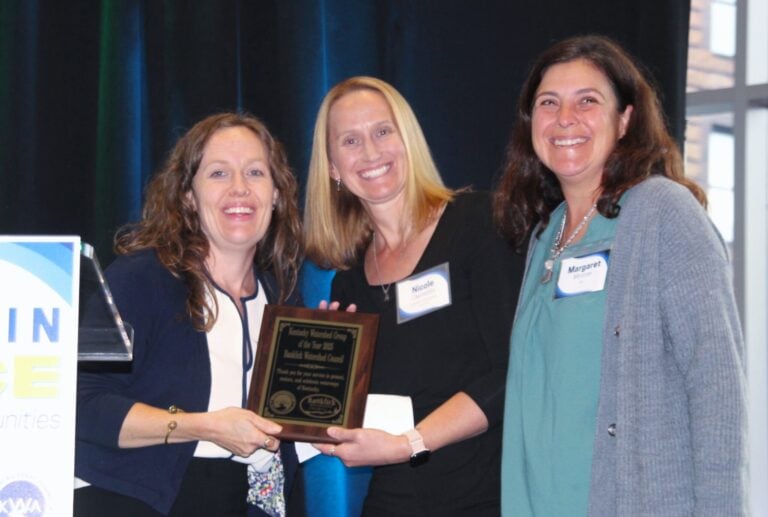By Patricia A. Scheyer
NKyTribune reporter
Boone County Planning and Zoning Director Kevin Costello and Community Services Director Jenna LeCount presented an update to the Boone County 2045 Comprehensive goals and objectives plan at the regular meeting of the fiscal court last week.
After the 25-minute presentation, Judge Executive Gary Moore asked commissioners if there were any comments or questions.
“My number one priority is the comprehensive plan,” said Commissioner Chet Hand. “I made some comments earlier this year, because I thought there were too many objectives. Before there were 112 and now there are 65, so you guys reduced them a bunch.”

He had more points about the plan.
“I still hold that I think the goals and objectives have to be very clear, specific in their language, and measurable,” he went on. “It is because that’s the fiscal court saying ‘this is our plan for land use in our county.'”
But he said that if the elements of the goals and objectives don’t align with the court’s intent, the court has no veto power over those elements.
“If they don’t align, the only recourse we have as an elected official is to turn down zoning applications, which has a negative impact potentially on individuals that are applying, but it also requires a 75 percent threshhold, which is different than a simple majority threshhold in committee, so I think that does a disservice to the public.”
He asked for confirmation that the fiscal court doesn’t have any input on the elements, and LeCount said they do from the perspective of the planning commission’s goal to continue to engage with all elected officials. Kevin Costello also said they welcome any and all suggestions from elected officials.
Hand went on to say that the court’s only official approval of the goals and objectives is next April; he further clarified that the court does not approve anything after that in connection with the Comprehensive plan, and LeCount affirmed that conclusion.
So therefore, Hand said, the commissioners have no feedback on the elements, those elements could be discussed, developed, and approved and the court would have no say over them.
LeCount said yes, but some of those do come back to the court in the form of zoning amendments, or development plan reviews and that constitutes a checks and balances of sorts. She also reminded Hand that members of the Planning Commission are approved by the court.
Hand said he was not discounting all the work the commission put into the plan, but he said for instance, instead of taking out all the ‘should’ and ‘shall’ words, they should put more in. He also said there could be a disagreement or difference with the different localities and elected bodies, because for instance, he pointed out that there is an entire section in the plan on preserving farm land, and he rhetorically asked how many acres of farmland is Florence preserving? They’re not, he answered himself.

“So the intent of the comprehensive plan really is to be countywide,” LeCount explained. “And if we’re doing our jobs well, which we intend to do, the elements, and the recommendations within the elements, should fall in line with those goals and objectives. So those goals and objectives do need to be able to provide enough clarity that we have that guidance of how to move forward into recommendations. but those recommendations and the details within the elements themselves really are where we get more specific.”
She said that because the agriculture discussion is different for the different parts of the county, the intent is that the plan will cover all the needs of all the parts of the county.
Hand said he understood that, but he wanted to know how to measure success against that. He agreed that there has to be a countywide plan, but countered that if it is really vague, and it is not specific, and the commissioners have no input on the elements, how does the court measure success or failure against any one of these goals and objectives?
“If we establish very vague goals and objectives that are not specific or measurable, and then from there you develop a series of elements that we have no input on, and that takes the goals and objectives that are vague down a path that is not necessarily what we agreed upon, but that is what the planning commission uses to approve or deny any future land use map adjustment application, then when it comes to us, and we end up with a package here that’s an application for approval or denial that’s no where near where we even agreed, identified in the goals and objectives,” he argued.
LeCount agreed that participation in the development of the elements is important, and in answer to Hand’s query about the commissioners having input in that development, she said they want the commissioners’ input. She said they serve all four legislative units.
Hand addressed both LeCount and Costello, saying he thought there was an element of the plan missing in their calculations, and that is an evaluation piece at the end — how are they doing against the plan. That should be quantifiable, he said, they should be able to use numbers, percentages—some data point that says they are or are not meeting the plan.
He explained that because they have had so much land available and so much growth that the county has been able to sustain a growth trajectory like this for the last 20 or 30 years, but now, as the county gets more dense, especially on the eastern side of the county, they need to start looking at a more careful growth potential, asking if this is right for this part of the county.
Costello said they do have measurements, assessments of the prior approvals. He said they do track single family development, as well as land available for single family development and apartments.
“There’s ways to do it,” he said, “and we do do it.”
“Yeah, but we’re being asked to provide input on goals and objectives, and we don’t even know if the last set was effective,” Hand stated. “We don’t even know if the last set of goals and objectives we approved five years or ten years ago was effective. Where’s the measure of success against that? I’m simply saying that I really think these goals and objectives have got to be more specific.”
Judge Moore stepped in, saying that is why this period from December 6 through January 5 is very important to meet, without violating any quorums, and discuss the matters, giving input on it. He agreed that there are ways to track ratios, and he noted that the ratio of single family homes to apartment complexes are now different than they were ten years ago, with less apartments and more single family homes.
“I think there is more tweaking, there is more adjustment that needs to be done,” Moore wrapped up the conversation, “and we will have that opportunity through January 5. Let’s not wait till January 4.”





















